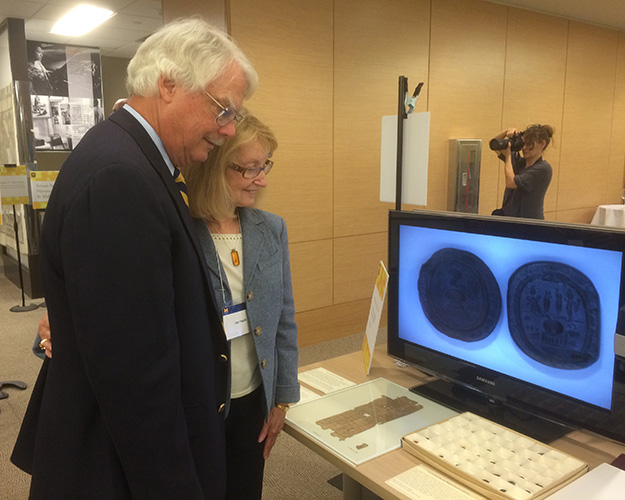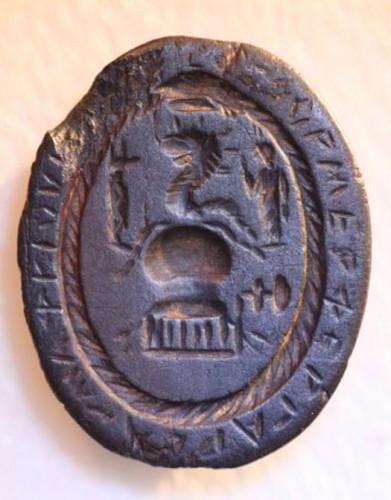We just hosted our annual donors' reception in the newly renovated space of the Taubman Library last Thursday! As always, it was a great opportunity to express our gratitude to all our friends for having supported the University of Michigan Library throughout the years. We again uttered a big THANK YOU in the best way we know, by displaying treasures from our collections and by sharing with our guests our latest projects.
Representing the Special Collections Library, my colleagues and I arranged several displays of unique items from some of our historical collections, including a wide range of areas such as radical literature (Labadie Collection), transportation history, Judaica, film (Robert Altman Archive), children's literature, and the history of medicine.
A big attraction within the history of medicine display, which contained a selection of artifacts and richly illustrated texts from late antiquity (100-500 C.E.) through the Renaissance, was our collection of magical amulets, many of them with healing properties. But what are these ancient artifacts? How were they used? Did they actually work? These were some of the questions the guests asked.

Carl and Jari Smith examing some examples from the Campbell Bonner Collection of Magical Amulets (Special Collections Library)

Bonner 21. Small oval hematite (18x15x4 mm). Symbolic representation of the uterus
The best way to answer some of those questions is to share with you, as I did during the donors' reception, how scholars have interpreted the symbolism, the iconography, and the words, of one of the amulets that were displayed on that big screen. The inscriptions scattered on the tiny piece of hematite shown above can be described as follows. Ouroboros—a snake eating its tail, probably a symbol of the abyss—encloses a symbolic representation of the uterus. On the center of the amulet is the uterus itself, depicted in the form of a vessel with the mouth downward. From its bottom two curved lines on each side represent the fallopian tubes and ligaments. The rectangular box with something resembling the crank of a winch is in fact a schematic depiction of a large key, which in the ancient world could mean the encouragement or the prevention of conception. On the upper half of the stone, from left to right, we can see the mummy of Anubis, the Greek name for a jackal-headed god associated with the afterlife in Egyptian religion; Chnoubis, a coiled serpent with a lion head, believed to prevent abdominal pain and ensure an easy childbirth; and Isis, the Egyptian goddess of motherhood, magic, and fertility. On the edges, we read a long Greek “word”: σοροορμερφεργαρβαρμαφριου. Clearly, a babbling repetition of syllables widely recognized as possessing ritualistic and magical powers. Well, I just unveiled all the secrets. Many centuries ago, somewhere in Syria, or Egypt, a woman might have held in her hand this inscribed stone, perhaps in the hope that, by pronouncing that long word, she will conceive a long-desired child. It is also possible that the owner of this amulet was a doctor who, anticipating a difficult birth, delicately applied this piece of hematite on the womb of the anxious mother.